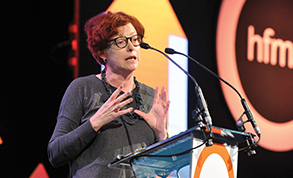Clearing the backlog could cost £17bn
Speaking ahead of an expected government announcement of increased NHS funding this week, the foundation’s Real Centre (Research and Economic Analysis for the Long Term) said the nearly £17bn would allow the treatment of an additional 2.2 million extra patients to be seen a year. This would enable the NHS to clear the backlog that has built up during the Covid-19 outbreak, return to 18-week waits, and treat millions of ‘missing’ patients who did not come forward for treatment during the pandemic.
However, NHS funding may need to exceed this figure as the Real Centre’s modelling does not include the ongoing impact of Covid-19 on NHS productivity and the additional investment in primary and community services that may be needed to support recovery.
The body also warns that even with the funding, clearing the backlog will be challenging, as the service will need to find significantly more staff. Increased demand coupled with the backlog would need the NHS workforce to grow by more than a third over the coming decade, on top of the recruitment needed to reduce current shortages. This would see the total NHS workforce grow by up to 277,500 full-time equivalents by 2024/25, according to the foundation’s analysis.
Covid-19 will ‘cast a long shadow over the NHs for many years to come’, according to Anita Charlesworth (pictured), the foundation’s director of research and the Real Centre.
‘Long waits are not the only challenge facing the NHS. As the risks from Covid-19 continue the NHS needs to adapt to ensure it has enough capacity to treat outbreaks alongside the normal demands on the system,’ she said.
‘Enhanced infection control means the NHS can’t provide as much care as normal with the people and buildings it has. If heightened infection control measures are here to stay, the NHS will also need extra funding to fill the gap.’
She added that managing the costs of Covid-19 could be as much as tackling the waiting list backlog. ‘The government must resist the temptation to pick and mix funding for COVID-19 and for the backlog – patients need both,’ she said.
The think tank last week warned that day-to-day spending would need to rise by between £4bn and £7.1bn in 2022/23 compared with government plans before the pandemic, depending on how quickly the backlog was to be addressed. However, Covid has also had a negative impact on productivity, for example with infection prevention and control measures reducing capacity and throughput. The foundation has estimated that every 1% hit to productivity requires £1.5bn per year in addition.
A fall in productivity of 2% to 4% would cost an additional £3bn to £6bn per year to maintain the same level of care. This would leave the NHS facing funding pressures of between £7bn and £13bn in 2022/23.
The Real Centre has also estimated that the NHS capital budget would need to rise from £6.4bn in 2018/19 to £10.3bn in 2024/25. And social care would require funding of between £3.7bn and £7.9bn in 2022/23 to expand access to care, pay more to sustain the provider sector and pay higher wages.
In June, there were 5.5 million people on the NHS waiting list for routine treatment, with 1.7 million waiting more than 18 weeks. However there are an estimated eight million missing patients – people who would have been expected to be referred for treatment during the pandemic, but who did not present. If 75% of these missing patients return and activity continues as usual, the waiting list could grow to 12.5 million.
The funding estimates follow calls from NHS Providers and the NHS Confederation last week for an increase in NHS funding of £10bn next year, compared with the 2018 settlement.
Addressing the new Real Centre estimates, confederation chief executive Matthew Taylor said the ‘stark warning’ came as no surprise, but was ‘likely to be the tip of the iceberg’. ‘The £16.8bn is the minimum needed to clear the backlog, but on top of this, the NHS is facing almost £5bn of extra day-to-day running costs.
‘It’s critical that the government now makes good on its promise to give the NHS “whatever it needs”. This will mean the health service can continue doing the vital work of both managing the ongoing threat from Covid-19 and tackling the huge backlog of care that has built up.’
Deputy chief executive of NHS Providers, Saffron Cordery (pictured) called on the government to deliver a bold response.
‘The last time the NHS faced a challenge like this was in the early 2000s,’ she said. ‘It took a bold commitment from the government – and public support for that commitment through higher taxes – to give health services the resources needed to tackle waiting times and improve quality of care. We need the government to be bold again.’
Related content
We are excited to bring you a fun packed Eastern Branch Conference in 2025 over three days.
This event is for those that will benefit from an overview of costing in the NHS or those new to costing and will cover why we cost and the processes.